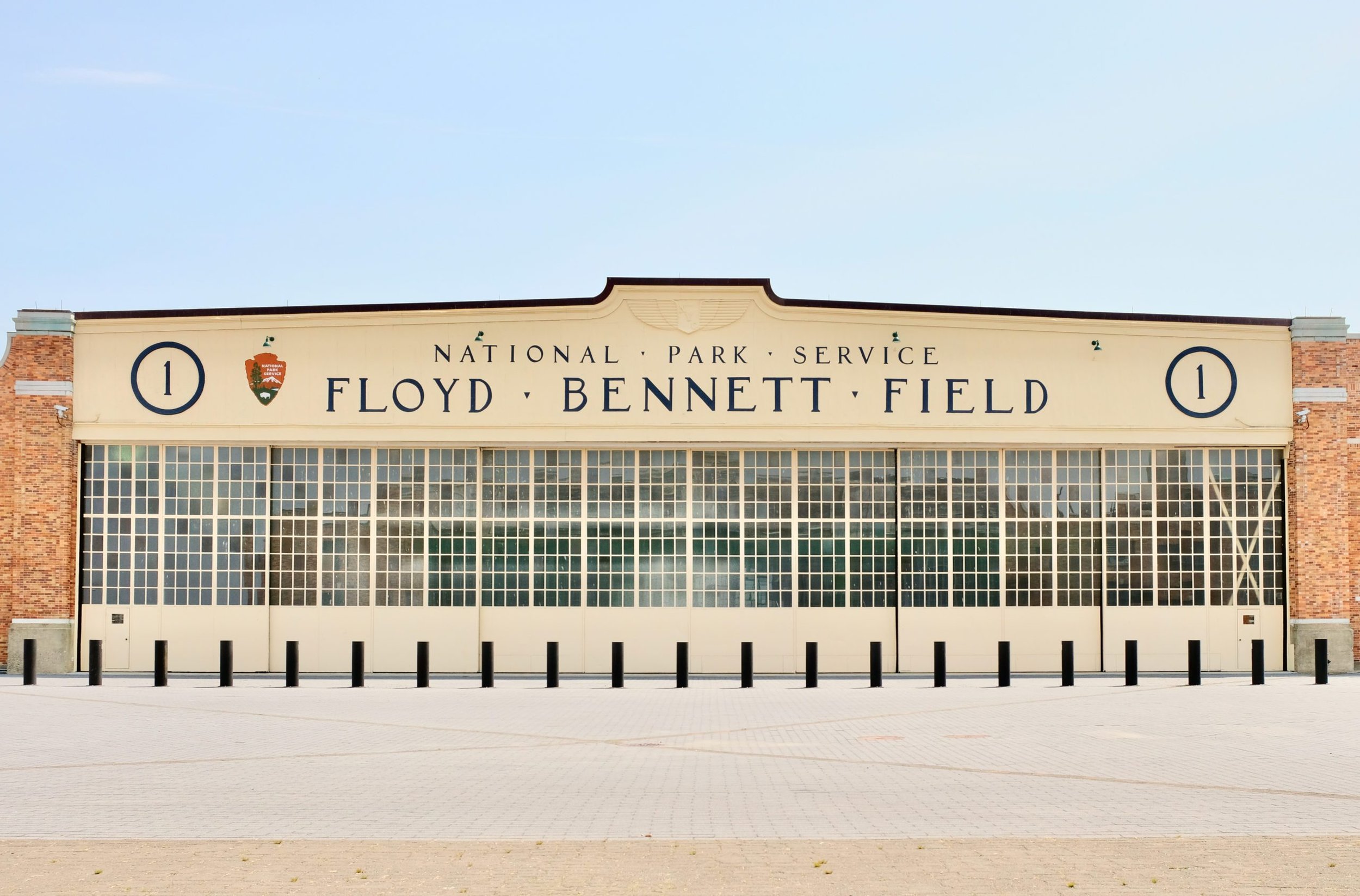
FUTURE OF FLOYD BENNETT FIELD
Floyd Bennett Field, New York City’s first municipal airport, stands as one of our city’s greatest treasures. Once the site of record breaking flights by aviation pioneers like Amelia Earhart, Roscoe Turner and Howard Hughes, it has since transformed into a national park, offering the public a rare opportunity to explore 1,300 acres of uninterrupted, wide open spaces and grasslands. Visitors can marvel at migratory birds on the Atlantic flyway, and connect with the surrounding waters and the wildlife. Today Floyd Bennett Field stands as a truly democratic space, inviting New Yorkers and visitors alike to engage in a wide array of recreational activities.
Howard Hughes’ plane landed at Floyd Bennett Field after his record-breaking round-the-world flight
Floyd Bennett Field is poised to become one of the region’s premier hubs for innovation, economic opportunity and academic research. To realize this potential, the Jamaica Bay Rockaway-Parks Conservancy (JBRPC) in partnership with the Science and Resilience Institute at Jamaica Bay (SRIJB) and the National Park Service (NPS) will activate underutilized historic buildings and green spaces, investing in infrastructural improvements and unlocking opportunities offered nowhere else in New York. These actions will transform Floyd Bennett Field into a dynamic center of progress and collaboration.
Conceptual rendering of nature-based solutions and climate tech hub at Floyd Bennett Field
In September 2024, after a decade of stakeholder engagement and visioning, JBRPC shared its initiative to build a nature-based solutions and climate tech hub at Floyd Bennett Field, along with space for cultural events, food, beverage and regular communal areas. The project will create 50,000 square feet of interior space in Hangars 3 and 4, next to the Ryan Visitor. Nature-based solutions offer a powerful and often overlooked approach to mitigating and even reversing the impacts of climate change. By addressing issues like flooding from rainfall and storm surge, the urban heat island effect, habitat and biodiversity loss, and risks to life and property for over 8.5 million New Yorkers, these strategies play a crucial role in building a more resilient future. To name just one example, peer-reviewed research shows that one acre of salt marsh sequesters carbon at 50 times the rate of one acre of forest, and is also capable of absorbing 1.5 million gallons of floodwater, which is equivalent to more than 2.25 Olympic-size swimming pools.
This climate innovation center will join several others in New York City that have already made adaptive reuse of 20th century infrastructure, including the Brooklyn Navy Yard reactivation, the launch of Newlab, and the coming launch of the New York Climate Exchange’s campus on Governors Island. The nature-based solutions and climate tech hub at Floyd Bennett Field will differentiate itself by focusing on nature-based solutions for our climate crisis, and the technologies needed to accelerate and scale their implementation, measure and validate the impacts of their use. Notably, this will be the only climate innovation center in New York City within the communities on the front lines of climate change.
Floyd Bennett Field Nature-based Solutions and Tech Hub, Strategically Placed Within the Jamaica Bay Watershed
The technologies developed and research conducted at Floyd Bennett Field will make a marked impact for the communities closest to the front lines of climate change consequences in New York City, in neighborhoods far from the Manhattan and Brooklyn waterfront core — and will provide lessons for policy makers across the world.
These latest developments are the culmination of more than a decade of work from JBRPC and its partners. JBRPC and SRIJB in particular have been working together since 2013, to re-imagine the future of Jamaica Bay and transform this urban tidal estuary and its parks into a hub for coastal resilience, academic research and education while remaining grounded in community input and equity. In 2021, the two organizations released a Progress Report that details many of those efforts.
Jamaica Bay is a living laboratory, capable of hosting a multitude of nature technologies that augment and enhance nature-based solutions. The sweeping adaptations to our new climate reality will take all of us banding together. We look forward to joining with more peers in parkland stewardship, technologists, researchers and investors as the spirit of innovation takes flight again once more at Floyd Bennett Field!
Hangars 1 + 2 (rear) and the to-be-restored Hangars 3 + 4 (front) at Floyd Bennett Field







